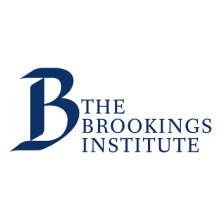As COVID-19 spread across the world, governments responded with an unprecedented increase in social assistance measures. Policymakers had to shift their focus to urban areas, particularly slums, whose residents were hit the hardest by the pandemic and its economic impact. Social safety nets, traditionally targeting chronic poverty in rural areas, had to be reinvented overnight: The new objective was to prevent informal workers affected by lockdowns from falling back into poverty. Exciting innovations in the design and delivery of social transfers followed, with emerging lessons informing us, as the world continues battling the pandemic.
COVID-19 in Kinshasa: A mission impossible scenario
Kinshasa, the capital of the Democratic Republic of the Congo (DRC), is a case in point. The social and economic effects of the crisis have been devastating in this megacity of 15 million people, two-thirds of whom were poor pre-pandemic. Job losses, price increases, and a drop in remittances quickly increased the financial vulnerability of most households. The situation called for a large-scale emergency cash transfer program, even if none of the prerequisites were in place: no program administration to build on, no social registry or fiscal records to target beneficiaries, and a weak financial ecosystem to make payments. In short, the program had to be built from scratch, remotely, and fast.
The DRC Social Fund took up the challenge with the Solidarité par Transferts Economiques contre la Pauvreté à Kinshasa (STEP-KIN) program. What was the plan?
Related Content
10 steps to set up a cash transfer program from scratch
A. Identification of the eligible population
- Select poor neighborhoods based on all available data, from satellite imagery to flood-prone cartography. Everybody living in selected areas was deemed eligible for the program. Inclusion error was small—few rich people live in poor neighborhoods.
- Sign nondisclosure agreements with telecom operators to obtain an anonymized list of mobile phone subscribers living in the targeted areas (cell tower mapping). This whitelist of phone numbers—granting eligibility to the program, as opposed to a blacklist—substitutes for the social registry.
- Screen this whitelist with simple filters to further limit inclusion errors, e.g., no smartphones. Research shows that mobile phone data (also known as call detail records) are a reliable proxy for poverty status. In fact, their analysis can be an alternative to standard welfare surveys.
B. Self-registration of beneficiaries
- Set up a system for self-registration that allows eligible people to express their interest in participating and remotely provide their information. To work at scale, the system has to be automated, leveraging simple technologies for interactive mobile data collection.
- Launch the self-registration process by sharing information with eligible people. Bulk written (SMS) or audio (IVR) messages are sent to all the whitelist numbers. A radio campaign—or another traditional communication channel—complements this outreach for trust-building.
- Finalize the program’s beneficiary registry. All the subscribers from the whitelist who have consented to participate and shared their data are now the program’s beneficiaries. Information collected must be minimal to maximize the response rate and protect respondents’ privacy.
C. Digital payment of transfers
- Request telecom operators to open a mobile money account for all the beneficiaries. This is straightforward as program beneficiaries are already phone subscribers. Depending on the country’s financial regulation, this step may require a simplified Know-Your-Customer framework.
- Instruct the operators to initiate the social transfers to the beneficiaries through digital payments. Note: This step and the following two are standard in any digital cash transfer program.
- Ensure all the beneficiaries can cash out the transfers, i.e., large network of cash-out points in targeted neighborhoods and dedicated customer services. This also requires putting in place a grievance redress mechanism system like a 24/7 hotline.
- Implement post-distribution monitoring surveys to collect information on the use of the transfers, confirm targeting effectiveness ex post, identify compliance issues early, and strengthen accountability.
In an independent effort, Togo has used a similar methodology for its successful Novissi cash transfer program. Other examples of tech-savvy innovations for each of these 10 steps abound.
Source: DRC Social Fund.
Does it work? 100,000 beneficiaries and counting
In three months, STEP-KIN identified, registered, and paid more than 100,000 individuals in 50 poor neighborhoods, becoming the largest cash-based operation in Kinshasa. The program is now expanding to 250,000 recipients for a total of $37.5 million to be transferred in monthly payments of $25. The first 6,500 randomized post-distribution surveys show that the targeting worked, i.e. beneficiaries are poor and vulnerable, with 40 percent unemployed and the remaining 60 percent earning less than $100 per month on average. They also document that the program’s objective is achieved: Recipients cash out for (i) meeting food needs, (ii) spending on health and education, (iii) reinvesting in their livelihoods, and (iv) paying rent.
Lessons and the challenges ahead
STEP-KIN was designed out of necessity and deployed with a learning-by-doing approach. This “quick and dirty” digital targeting approach works when the goal is to quickly reach a large population. Speed (and cost-efficiency) trump accuracy here. Other targeting methods would perform better where inclusion errors matter more, e.g. assistance for the ultra poor. Leveraging telecom data requires a very high mobile penetration rate (92 percent in Kinshasa). In many countries, it would work in urban settings only. Further, we should be careful of unintended consequences: the use of technologies may increase de facto exclusion of the most vulnerable, such as a lower registration and cash-out rate of women (38 percent of beneficiaries). Alternatives to technologies, such as on-site registration, must always be offered. Lastly, protecting beneficiaries’ privacy is a priority in processing personal data. The program must adhere to recognized industry standards by using data for legitimate purposes only and fairly and transparently.
Using telecom data and mobile technologies is not the panacea for social safety nets. However, given the new focus on crisis response in urban areas, why not continue to explore this promising solution?



